UPSC Daily Current Affairs- 28th June 2024 | Current Affairs & Hindu Analysis: Daily, Weekly & Monthly PDF Download
GS2/International Relations
SAARC & Currency Swap Agreement
Source: Economic Times

Why in News?
The Reserve Bank of India (RBI) has decided to put in place a revised Framework on Currency Swap Arrangement for SAARC countries for the period 2024 to 2027.
About SAARC
- The South Asian Association for Regional Cooperation is the regional intergovernmental organization and geopolitical union of states in South Asia. It was established with the signing of the SAARC Charter in Dhaka in 1985.
Currency Swap Agreement
- A currency swap agreement is a financial contract between two parties to exchange principal and interest payments in different currencies. The primary purpose of such an agreement is to secure more favorable loan terms or to hedge against currency risk.
About SAARC:
- The SAARC includes eight South Asian countries: Afghanistan, Bangladesh, Bhutan, Maldives, Nepal, Pakistan, Sri Lanka.
- There are currently nine countries with 'Observer' status: Australia, China, European Union, Iran, Japan, South Korea, Mauritius, Myanmar, United States of America.
SAARC Structure:
- SAARC Summits
- The Meetings of the Heads of State or Government of Member States is the highest decision-making authority under SAARC.
- Summits are usually held biennially hosted by a Member State in alphabetical order.
- The Member State hosting the Summit assumes the Chair of the Association.
- Council of Ministers
- The Council of Ministers (CoM) comprises of the Ministers of Foreign/External Affairs of the Member States.
- The Council meets preceding the Summit and between the two summits.
- Secretariat
- The SAARC Secretariat was established in Kathmandu on 16 January 1987.
- Its role is to coordinate and monitor the implementation of SAARC activities.
About Currency Swap Agreement:
- Exchange of Principal
- Interest Payments
- Re-exchange of Principal
Benefits of Currency Swap Agreements
- Hedging
- Access to Capital
- Cost Savings
India’s Currency Swap Agreements:
- Commerce Ministry, Government of India, has finalized arrangements with some 23 countries for trading in local currencies.
- India's emphasis has been to persuade countries to come to this arrangement, particularly with countries where India has a substantial trade deficit.
Currency Swap Arrangement for SAARC countries:
- The Reserve Bank of India (RBI) announced a revised Currency Swap Framework for SAARC countries, enabling bilateral currency swap agreements between the RBI and SAARC central banks.
- A new INR Swap Window with concessions for Indian Rupee support, totaling ₹250 billion, has been introduced.
- All SAARC member countries can access the facility by signing bilateral agreements.
GS2/Polity
What is the Justice Reddy Commission, against which KCR has moved Telangana High Court?
Source: Indian Express
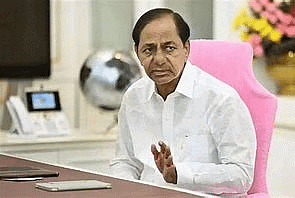
Why in news?
On June 27, the Telangana High Court postponed the hearing on a petition filed by Bharat Rashtra Samiti (BRS) president and former Telangana Chief Minister K Chandrashekar Rao. The petition sought to halt all future proceedings of the Justice (retired) L Narasimha Reddy Commission until Friday.
What is the Narasimha Reddy Commission?
- Formation: Appointed by the Congress government of Chief Minister A Revanth Reddy in March 2024.
- Purpose: To investigate Power Purchase Agreements (PPAs) made with Chhattisgarh in 2014-15 and construction of power projects at Yadadri and Bhadradri. Allegations of irregularities in the Kaleshwaram irrigation project.
What is Power Purchase Agreements (PPAs)?
- Power Purchase Agreements (PPAs) are long-term contracts between electricity producers (such as power plants) and purchasers (such as utilities, governments, or large industrial consumers).
- These agreements stipulate the terms under which electricity is to be generated, delivered, and sold over a specified period.
Notice Issued:
- On June 11, the Commission issued a notice to K Chandrashekar Rao (KCR) requesting a response by June 15 regarding the PPAs made during his tenure (2014-2023).
KCR's Response:
- KCR accused the Commission of bias and political motivation, requesting Justice Reddy to recuse himself.
Legal Action:
- Anticipating a personal summons, KCR filed a petition in the Telangana High Court seeking a stay on all proceedings of the Commission.
Energy Minister Notice:
- G Jagdish Reddy, Energy Minister in KCR's Cabinet, was also issued a notice to appear before the Commission to provide a statement regarding the PPAs.
Allegations Regarding the Power Plants
- Irregularities in Construction: The Narasimha Reddy Commission is investigating allegations of irregularities in the construction of the Bhadradri Thermal Power Plant at Manuguru and the Yadadri Thermal Power Plant at Damaracherla. Both projects were executed by the Telangana State Power Generation Corporation (TG GENCO).
- Specific Concerns: The focus is on potential discrepancies and irregularities during the construction process, which may involve issues related to project execution, costs, and adherence to regulatory norms.
Way forward:
- Fair and Transparent Investigation: The Narasimha Reddy Commission should ensure a fair and transparent investigation into the allegations concerning Power Purchase Agreements (PPAs) and the construction of power projects.
- Collaboration and Accountability: Stakeholders, including former government officials and current authorities involved in the projects under scrutiny, should cooperate fully with the Commission.
GS2/Polity
President's Address to the Joint Sitting of Parliament
Source: Mint
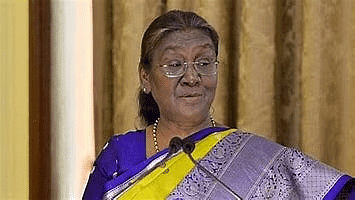
Why in news?
President Droupadi Murmu addressed the joint session of both houses of Parliament after the constitution of the 18th Lok Sabha. During this, she spoke about a wide range of topics, including recent paper leak cases, higher voter turnout in Kashmir valley during recently held Lok Sabha polls, concerns over EVMs, India's agriculture, and forthcoming budget.
Key highlights of the President's Address
- Article 87 provides two special occasions on which the President addresses a joint sitting.
- The first is to address the opening session of a new legislature after a general election.
- The second is to address the first sitting of Parliament each year.
- The purpose of this address is to inform Parliament of the causes of its summons.
- The President’s speech essentially highlights the government’s policy priorities and plans for the upcoming year.
- The address provides a broad framework of the government’s agenda and direction.
- Apart from this, the President has a right to address any one or both Houses together.
- He may also send messages to either House with respect to a Bill or otherwise.
Key Highlights of the President's Address - Vision for a Developed India
Upcoming Union Budget: Historic Steps
- Historic Steps in Budget: The upcoming Union Budget will introduce historic steps and significant economic and social decisions to accelerate India's development.
Accelerated Reforms
- Commitment to Reforms: The government is committed to accelerating reforms to meet the aspirations of the Indian people for rapid development.
Reference to Emergency and Constitutional Resilience
- Recalling the Emergency: The Emergency imposed in June 1975 was termed the "biggest and darkest chapter" of direct attacks on the Constitution.
- Constitutional Resilience: The Indian Constitution has withstood numerous challenges over the decades.
Article 370 and Jammu & Kashmir
- Full Enforcement of Constitution: The Constitution is now fully in force in Jammu and Kashmir after the abrogation of Article 370 in August 2019.
- High Voter Turnout: Unprecedented voter turnout in Jammu and Kashmir during the Lok Sabha elections is a significant response to false propaganda about the region.
Election Mandate: Trust in Governance
- 2024 Election Mandate: The 2024 election was seen as a mandate of trust in the government's policies, intentions, dedication, and decisions.
- Key Areas of Trust: Trust in strong and decisive governance, good governance, stability, continuity, honesty, hard work, security, prosperity, and the vision for a developed India ("Viksit Bharat").
Defence of EVMs and Electoral Integrity
- Support for EVMs: Defended the use of Electronic Voting Machines (EVMs) and praised the Election Commission for conducting successful elections, emphasizing trust in democratic institutions and the electoral process.
Commitment to Fair Examinations
- Fair Examinations Assurance: Commitment to fair investigations and strict punishment for examination malpractices, ensuring transparency and opportunities for the youth.
Call to Action Against Misinformation
- Countering Misinformation: Warning against disruptive forces spreading misinformation and rumors, calling for collective efforts to counter these threats.
Appeal for Parliamentary Cooperation
- Smooth Parliamentary Functioning: Disapproved of parliamentary disruptions and stressed the need for smooth functioning to maintain public confidence in the government.
- Prioritizing Public Interest: Emphasized healthy deliberations and far-reaching decisions for public interest.
Highlighting Government Achievements
- Government Achievements:
- Welfare schemes like free ration distribution to 80 crore people.
- Kisan Samman Nidhi payments to farmers.
- Significant increase in defense exports.
- Record GST collections.
- Construction of PM Awas houses.
- Abolition of interviews for Group C and D posts in the Central government.
Focus on Key Demographics
- Special Mention: Emphasis on women, youth, farmers, and the poor, aligning with Prime Minister Narendra Modi's focus on these groups in government initiatives
GS3/Economy
RBI releases the 29th Financial Stability Report, 2024
Source: Business Today
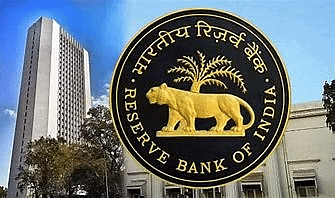
Why in news?
The Reserve Bank of India has released the 29th issue of the Financial Stability Report (FSR).
About Financial Stability Report:
- The FSR is published biannually by the RBI.
- It reflects the collective assessment of the Sub-Committee of the Financial Stability and Development Council (FSDC – headed by the Governor of RBI) on risks to financial stability and the resilience of the financial system.
- The Report also discusses issues relating to the development and regulation of the financial sector.
Key Highlights of the FSR
Heightened Global Risks:
- Geopolitical Tensions: Conflicts or political disagreements between countries that can affect global stability.
- Elevated Public Debt: Many countries owe large amounts of money, which can be risky if they struggle to repay it.
- Slow Progress in Disinflation: Prices of goods and services are not decreasing quickly, which can affect economic stability.
- Resilience: Despite these challenges, the global financial system remains strong and stable.
Indian Economy and Financial System
- Robust and Resilient: India’s economy and financial system are strong and able to handle shocks or problems.
- Banking Sector Support: Banks and financial institutions are in good health and are lending money to support economic activities.
Financial Metrics for Scheduled Commercial Banks (SCBs)
Capital Ratios
- Capital to Risk-Weighted Assets Ratio (CRAR): A measure of a bank’s financial strength.
- Common Equity Tier 1 (CET1) Ratio: A stricter measure of a bank’s core capital.
Asset Quality
- Gross Non-Performing Assets (GNPA) Ratio: Measures the percentage of a bank’s loans that are not being repaid.
- Net Non-Performing Assets (NNPA) Ratio: Considers the money the bank has set aside to cover bad loans.
Macro Stress Tests for Credit Risk
Stress Scenarios and Projections
- Baseline Scenario: Expected CRAR of banks under normal conditions.
- Medium Stress Scenario: Expected CRAR of banks under moderate stress.
- Severe Stress Scenario: Expected CRAR of banks under severe stress.
- Interpretation: Hypothetical scenarios to ensure banks are prepared for tough times.
Health of Non-Banking Financial Companies (NBFCs)
- NBFCs have a CRAR of 26.6%, indicating they are financially strong.
- GNPA Ratio: NBFCs have a GNPA ratio of 4.0%, meaning 4% of their loans are not being repaid.
- Return on Assets (RoA): NBFCs have a RoA of 3.3%, indicating they are making good profits from their assets.
GS2/Polity
What is the role of the Lok Sabha Leader of Opposition?
Source: Indian Express
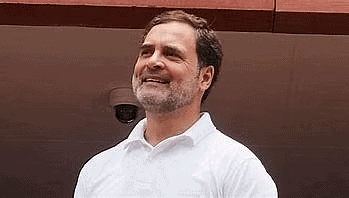
Why in news?
For a decade, the Leader of Opposition in Lok Sabha remained vacant due to the absence of any party meeting the customary threshold of one-tenth of the House’s strength, now filled by Rae Bareli MP Rahul Gandhi.
Leader of Opposition in the past:
Legal Definition:
- According to The Salary and Allowances of Leaders of Opposition in Parliament Act, 1977, the Leader of the Opposition is a member of the Lok Sabha or Rajya Sabha who leads the largest party in opposition to the government, recognised by the Speaker (Lok Sabha) or Chairman (Rajya Sabha).
Who can serve as Leader of Opposition in Lok Sabha and Rajya Sabha?
- Needed Strength: The leader must lead the party with the greatest numerical strength among the opposition parties in the respective House.
- Recognition: The Speaker (Lok Sabha) or Chairman (Rajya Sabha) is mandated to recognize the leader of the largest opposition party as the Leader of the Opposition, irrespective of the party having a minimum threshold of 10% seats in the House.
Significance of the positions and its significant role in Indian Political Democracy
- Voice of the Opposition: The Leader of the Opposition serves as the primary spokesperson for the opposition in the House, articulating their views, criticisms, and alternative policies to those of the government.
- Role in Committees: The Leader of Opposition plays a crucial role in high-powered committees responsible for appointments to key posts like the Director of CBI, Central Vigilance Commissioner, and others. This ensures a bipartisan approach in crucial appointments.
- Ceremonial Role: The Leader of Opposition enjoys ceremonial privileges such as sitting in the front row during important occasions like the President’s Address to Parliament, symbolizing their role as a significant political figure.
- Constitutional Checks and Balances: By providing an institutionalized position for the opposition, the Leader of Opposition ensures checks and balances on the ruling party’s power, fostering democratic accountability and oversight.
- Precedence and Protocol: In the order of precedence, the Leader of Opposition ranks alongside Union Cabinet Ministers and other senior officials, reflecting their role in the functioning of the parliamentary democracy.
Conclusion:
The Leader of Opposition in Lok Sabha and Rajya Sabha, recognized per the 1977 Act, leads the largest opposition party, ensuring a vital role in governance oversight, committee appointments, and parliamentary protocol, crucial for democratic checks and balances.
Mains PYQ:
The Indian Constitution has provisions for holding joint sessions of the two houses of the Parliament. Enumerate the occasions when this would normally happen and also the occasions when it cannot, with reasons thereof. (UPSC IAS/2017)
GS3/Economy
Why Govt Must Create a Buffer Stock of all Main Food Items?
Source: Indian Express
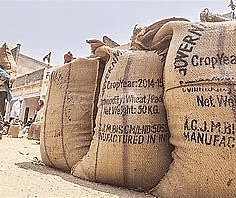
Why in news?
Sales of wheat and chana in the open market have effectively curbed soaring inflation in cereals and pulses.
What is an Open Market?
An open market is an economic system with little to no barriers to free-market activity. It is characterized by the absence of tariffs, taxes, licensing requirements, subsidies, unionization, and any other regulations or practices that interfere with free-market activity. Open markets may have competitive barriers to entry, but never any regulatory barriers to entry.
Present State of Inflation
- Overall CPI Inflation: Stood at 4.75% year-on-year in May, the lowest in 12 months, but food inflation remained elevated at 8.69%.
- Cereals and Pulses: Inflation rates were 8.69% for cereals and 17.14% for pulses in May 2024.
Impact of Buffer Stocks
Buffer stocks of wheat and chana moderated inflation by ensuring sufficient supply during periods of price volatility.
How Buffer in Gram(Chana) Helped
- NAFED Procurements: Procured large quantities of chana during surplus years at MSP, preventing prices from soaring during crop failures.
- Distribution: Sold chana through various channels including open market e-auctions and ‘Bharat Dal’ at subsidized rates, stabilizing prices for consumers.
- Current Stock Levels: Despite recent sales, NAFED still maintains a buffer stock of 4.01 lakh tonnes of chana as of now.
Significant Role Played by FCI
- Wheat Offloading: FCI offloaded a record 100.88 lakh tonnes of wheat in fiscal 2023-24 through open market sales, stabilizing prices and reducing inflation.
- Retail Price Management: Sales under schemes like ‘Bharat Atta’ ensured wheat and cereal inflation was reduced from peak levels earlier in 2023.
- Buffer Management: Despite reduced stocks from previous years, FCI’s interventions have been crucial in managing price volatility in essential commodities.
Need to Adopt Buffer Policy and Better Procurement
- Buffer Stock Strategy: Proposal to expand buffer stocks beyond rice, wheat, and select pulses to include oilseeds, vegetables, and even milk powder to mitigate price spikes.
- Enhanced Procurement: Advocates for increased procurement during surplus years to build adequate buffer stocks for future market stabilization.
- Policy Impact: Buffer stocking can moderate price volatility influenced by climate change-induced agricultural uncertainties, benefiting both consumers and producers.
Way forward
- Enhanced Diversification of Buffer Stocks: There is a need to diversify buffer stocks beyond traditional items like rice and wheat to include a broader range of essential commodities such as oilseeds, vegetables, and milk powder. This expansion would help in better managing price spikes and supply shocks across various sectors.
- Strengthened Procurement Mechanisms: Improving procurement strategies during surplus production years is crucial. This involves proactive measures to purchase larger quantities of commodities at minimum support prices (MSPs), ensuring adequate buffer stocks for future market stabilization and price moderation during scarcity periods.
Mains PYQ
Food Security Bill is expected to eliminate hunger and malnutrition in India. Critically discuss various apprehensions in its effective implementation along with the concerns it has generated in WTO (UPSC IAS/2013).
GS1/History & Culture
 |
Download the notes
UPSC Daily Current Affairs- 28th June 2024
|
Download as PDF |
Controversy over Sengol in Lok Sabha
Source: Deccan Herald
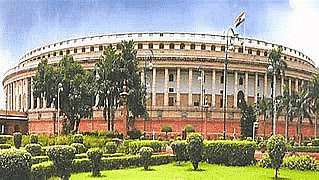
Why in News?
An opposition parliamentarian has demanded the removal of the Sengol from the Lok Sabha, calling it a symbol of "rajdand/rajtantra (monarchy)". This demand has become a point of contention between the government and the Opposition.
What is a Sengol?
- Sengol (or chenkol) is a royal sceptre symbolizing kingship, righteousness, justice, and authority. It is a traditional Chola-era symbol of authority and governance, originally from Tamil Nadu.
- It is a golden sceptre, richly adorned and crafted with intricate designs, reflecting the grandeur of ancient Tamil culture. Among the Madurai Nayakas, the sengol was placed before the goddess Meenakshi in the temple and then transferred to the throne room, representing the king's role as a divine agent.
Significance in the present context:
- Accountability and Legitimacy: Just as the Sengol legitimized ancient rulers by holding them accountable to higher moral standards, the institutions and practices in a parliamentary democracy ensure that elected representatives are accountable to the constitution and the people.
- Ethical Leadership: Leaders in a democracy are expected to uphold justice, integrity, and the rule of law, much like the dharmic kings of the past.
- Symbolic Representation: The Sengol, as a symbol of righteous rule, parallels the symbolic importance of democratic institutions that represent the will and welfare of the people.
1947 Sengol Ceremony Involving Nehru
- Government's Claim: The government claims C Rajagopalachari suggested the ceremony to Nehru. This claim is debated, as there is little contemporary evidence to support the Sengol being a key symbol of power transfer in 1947.
- Lack of Comprehensive Records: There are limited records about the ceremony where Nehru was reportedly handed a sengol by Hindu leaders from Tamil Nadu.
- Undocumented: The event is not widely documented, and claims of Lord Mountbatten handing it over ceremonially seem exaggerated.
- No Symbolization: Nehru accepted the Sengol as a mark of honor, but it was later placed in a museum, indicating it was not central to the transfer of power.
GS-III/Economics
Interest rates on small savings schemes like PPF, SCSS, and NSC are under review by Modi 3.0 government
Source: Economic Times
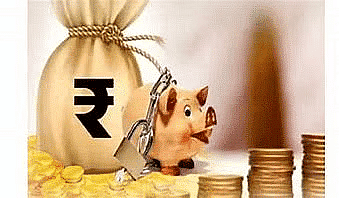
Why in news?
The central government of India is set to announce the interest rates for various small savings schemes, including the Public Provident Fund (PPF), Senior Citizen Savings Scheme (SCSS), National Savings Certificate (NSC), Sukanya Samriddhi Yojana (SSY), and Post Office Monthly Income Scheme (POMIS), for the July-September 2024 quarter by June 30, 2024.
Current Interest Rates and Expected Changes
- Current Rate: 7.1%
- Expected Rate: Despite the benchmark 10-year bond yield averaging 7.02% from March to May 2024, which would suggest a rate of 7.27% according to the formula, experts believe the government will likely maintain the status quo.
Senior Citizen Savings Scheme (SCSS)
- 8.2%
- Unlikely to see significant changes. With a spread of 100 basis points, the SCSS offers a substantial return, and experts predict the government will maintain existing rates to manage fiscal policies effectively.
Sukanya Samriddhi Yojana (SSY)
- 8.0%
- Expected to remain stable. The SSY enjoys a spread of 75 basis points. Given the controlled inflation and fiscal policies, a rate hike is not anticipated.
Factors Influencing Interest Rates
- Benchmark Yields: The interest rates for small savings schemes are linked to the yields of 10-year government securities.
- Market Conditions: Prevailing market yields and inflation rates play a crucial role in determining these rates.
- Government Policy: The central government’s fiscal strategy and policies, such as those outlined in the Union Budget, impact decisions on interest rates.
Investor Sentiment and Returns
- PPF: Investors in PPF may feel disappointed due to the stagnation in interest rates despite a slight uptick in benchmark yields. However, PPF still offers tax-free returns under the Exempt-Exempt-Exempt (EEE) status, making it an attractive long-term investment.
- SCSS and SSY: Stability in interest rates ensures a predictable income stream for senior citizens and parents of girl children, maintaining their trust in these schemes.
- Government Fiscal Management: Maintaining the current interest rates helps the government manage its fiscal deficit more effectively. Higher rates would increase the interest burden on the government, especially for widely subscribed schemes like PPF.
- Inflation Control: Stable interest rates reflect the government’s confidence in managing inflation. By not increasing rates, the government signals that it sees inflation as under control, thus aiming to keep borrowing costs stable for both the government and the public.
Market Stability
- Consistent interest rates contribute to market stability. Predictable returns on small savings schemes help in the planning of household finances, ensuring steady savings and investments. This stability can also foster overall economic stability by maintaining consumer confidence.
Conclusion
Investors in PPF, SCSS, and SSY should prepare for the possibility that interest rates will remain unchanged for the July-September 2024 quarter. While the formula indicates room for an increase in PPF rates, historical trends and expert opinions suggest that the government may maintain the current rates to balance fiscal control and market stability.
Mains PYQ
Pradhan Mantri Jan-Dhan Yojana (PMJDY) is necessary for bringing the unbanked to the institutional fiancé fold. Do you agree with this for the financial inclusion of the poorer section of the Indian society? Give arguments to justify your opinion. (UPSC IAS/2016)
GS3/Economy
UNODC World Drug Report 2024: Key Highlights
Source: The Tribune
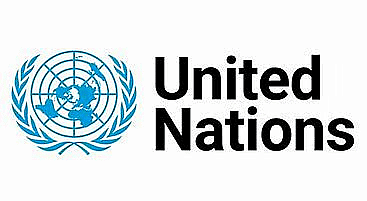
Why in news?
Global drug users reached 292 million in 2022, marking a 20% increase over the past decade. The report was released by the United Nations Office on Drugs and Crime (UNODC).
About UNODC
- Aspect: Leader in the fight against illicit drugs and international crime, responsible for implementing the UN's lead programme on terrorism.
- Headquarters: Vienna, Austria.
- Establishment: Formed in 1997 through the merger of the United Nations Drug Control Programme and the Centre for International Crime Prevention.
Functions
- Educate people about the dangers of drug abuse.
- Strengthens international action against illicit drug production and trafficking.
- Improves crime prevention and assists with criminal justice reform.
- Supports States in ratifying and implementing legal instruments against terrorism.
Funding
- Relies mainly on voluntary contributions from governments.
India and UNODC
- India works closely with UNODC on multiple fronts, including drug control, crime prevention, and anti-terrorism measures.
Cannabis Use: An Overview
According to the WHO, cannabis is a generic term for the various psychoactive preparations of the plant Cannabis sativa. Following are the derived products of Cannabis:
- THC: The major psychoactive constituent in cannabis is Delta-9 tetrahydrocannabinol (THC).
- Marijuana (Ganja): The Mexican term is frequently used to refer to cannabis leaves or other crude plant material in many countries.
- Hashish: Refers to unpollinated female cannabis plants.
- Cannabis Oil (Hashish Oil): A concentrate of cannabinoids obtained by solvent extraction of the crude plant material or resin.
International Laws Regulating Cannabis
- Commission on Narcotic Drugs (CND): The CND founded in 1946, is the UN agency mandated to control substances under global drug control conventions.
- 1961 Single Convention on Narcotic Drugs: Cannabis has been on Schedule IV, the most dangerous category, since the convention's inception.
- Despite being on Schedule IV, many jurisdictions have legalized cannabis for medicinal and recreational use. Over 50 countries now allow medicinal cannabis programs, and recreational use has been legalized in Canada, Uruguay, and 15 US states.
Indian Context: Narcotic Drugs and Psychotropic Substances Act (NDPS), 1985
- Illegalization: The Act illegalizes any mixture of charas and ganja, or any drink prepared from them.
- Legal Exceptions: The law does not ban the use of seeds and leaves of the cannabis plant if these are not mixed with other parts of the plant. For example, bhang, commonly consumed during the Holi festival, and chutney made from cannabis seeds are not illegal.
|
39 videos|4560 docs|976 tests
|























